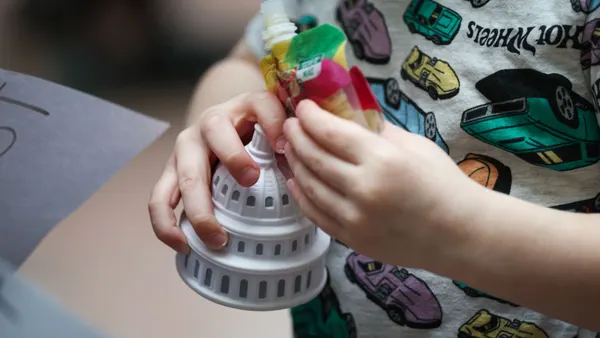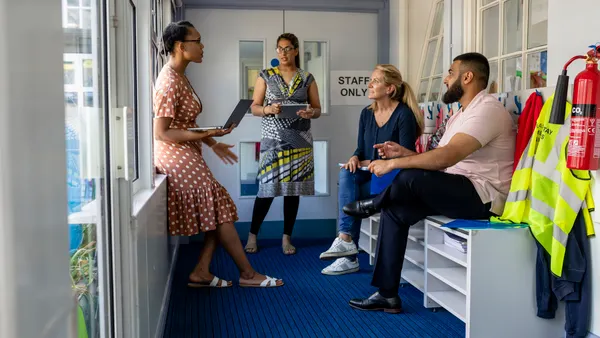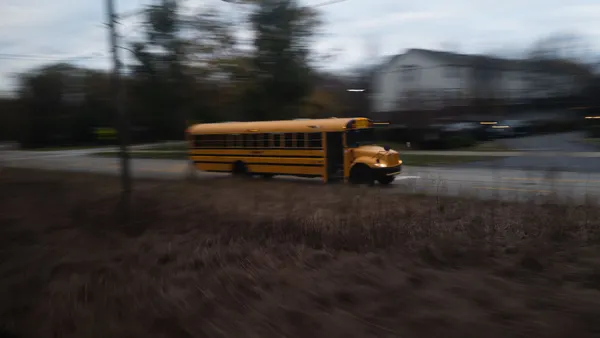Teacher well-being is one of the greatest challenges that schools face today. Thirty-five percent of teachers say they are likely to quit within the next 2 years, according to a 2023 study from Merrimack College, and a lack of respect, control and support for mental health pushed job satisfaction ratings to an all-time low last year.
Misael Munoz, Director of Public Sector at HON, and his team connect with schools across the nation to create innovative classroom and teacher environments. "At HON, we believe that designing an effective space requires a comprehensive collection of solutions.” He adds, "It’s easy to forget that furniture plays a significant role in shaping the learning experience for students and the teaching methods of educators. We can directly impact and improve school culture when we create the right environments to empower teachers to succeed."
Even small upgrades to your environment can lead to improvements in day-to-day experience and total well-being. Look out for these ways to improve how teacher lounges, administrative spaces and classrooms are outfitted to better support your educators.
Lounge Spaces for Relaxing & Resetting
Beyond the classroom, teacher lounges and collaborative hubs play a crucial role in fostering teacher interaction, idea exchange and support networks. These spaces should be designed to facilitate both formal and informal collaboration among educators.
The best lounge spaces prioritize the emotional well-being of teachers, and each of us have our own preferences for relaxing and resetting. You should look for furnishings that allow some individuals to spend time alone, while others may prefer socializing with peers in small groups and as larger teams.
As a place to decompress, the right color palette and materials can also help to create a “zen” zone. “I would always recommend including soft seating,” Munoz responded when considering ideas for these areas. Comfortable seating with a relaxed posture and products that dampen sound can create a calmer feeling within the room.
Designated Desks for Heads-Down Time
“Everyone needs a space at work where they can sit and have their own time,” Munoz reminds us, and many teachers lack a place where they can work individually outside of the classroom.
Touchdown moments with dedicated desks allow educators to spend time away from students in an area that is their own, and without them, it’s hard to ever feel truly settled in while at work. Desks with appropriate storage and partition features can help teachers feel a better sense of autonomy and focus on independent work.
Reserving extra desk space for substitute teachers or teachers who hop from school to school can also go a long way in welcoming visitors.
Empowering Teachers through Flexible Classroom Design
Today's classrooms are evolving from traditional setups into flexible, multifunctional spaces that encourage collaboration among students and educators. Furniture that can be easily rearranged, such as modular desks and seating, supports diverse teaching methodologies, empowering educators to configure their space in a way that’s best for them.
Look for desks that are lightweight and mobile, bookshelves that can roll or stay put, and soft seating that fits together like puzzle pieces. These solutions can move throughout the year and are more likely to stand the test of time as classroom needs evolve.
[Recommended resource: All-In-One Guide to Designing Effective Education Spaces]
Conclusion
Because so much is happening in teacher spaces before, during and after school, it’s easy to find yourself in a room that houses desks, the microwave and the copy machine, but as much as possible, you should set aside dedicated spaces for relaxing and resetting, and heads-down work time. Flexible classroom design empowers teachers to manage their classroom in whatever way is best for them, while outfitting lounge spaces and touchdown areas lets educators reset and complete individual work in between classes










